Hungarian Team Third Only with Time Penalties
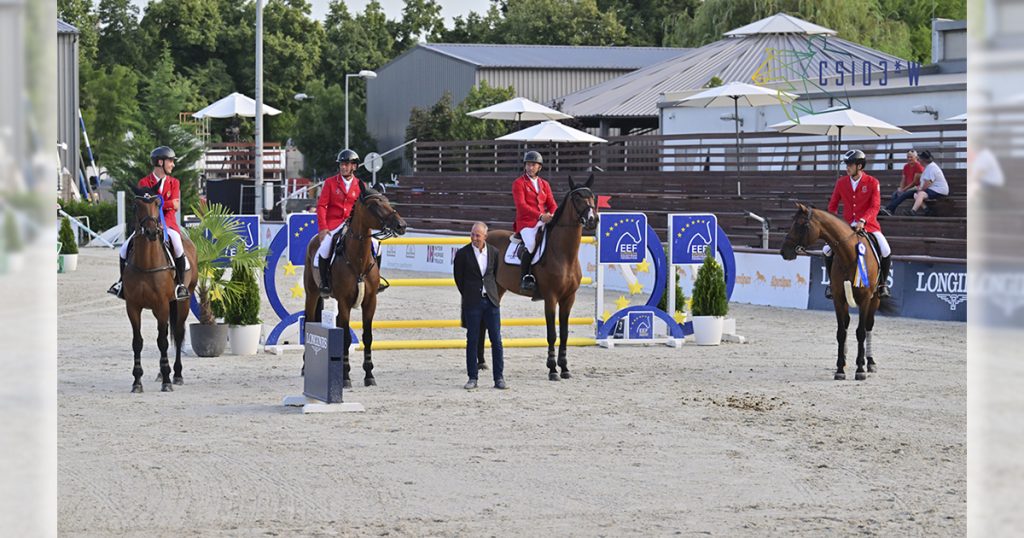
A prestigious field of 11 teams took part in the CSIO3* EEF Longines Series Semi Final Nations Cup team event for a total prize money of €90,000.
Each team comprises four riders, and one of them has to be under 25, according to the Nations Cup rules. Interestingly, the Hungarian and Dutch teams had each two U25 riders. The penalties of the best three athletes in both rounds are totalised and established the final result.
The starting order of the teams was determined by a draw in the presence of the Chefs d’Equipes on Wednesday. The starting order was as follows: Hungary, Netherlands, Slovenia, Italy, Germany, Ukraine, Switzerland, Slovakia, Greece, Austria, and Czechia.
International course designer Bernardo Costa Cabral built a well-rideable track with 12 obstacles, including one double and one treble combination, 15 efforts in total. The time allowed was short, 77 seconds.
Major pressure was on 23-year-old Péter Szuhai, who was not only the first rider of the Hungarian team, but also the first rider of the whole competition. However, he completed a fast clear round.
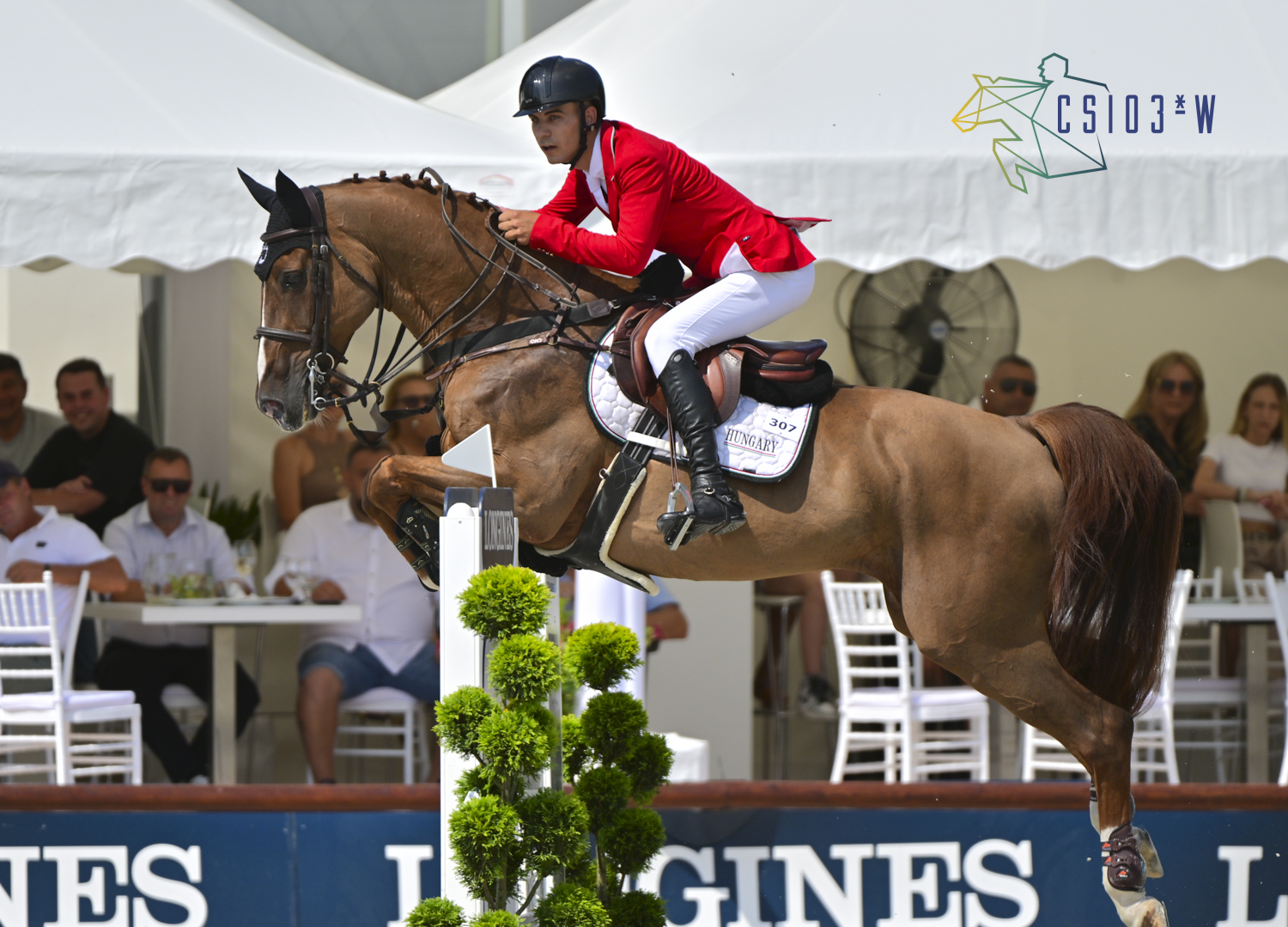
In the first rotation only two riders collected penalties: Slovenian Lidija Grum on Ultra Unica scored 15 faults, while Slovak Dominika Gaalova on Senjor Catello, four.
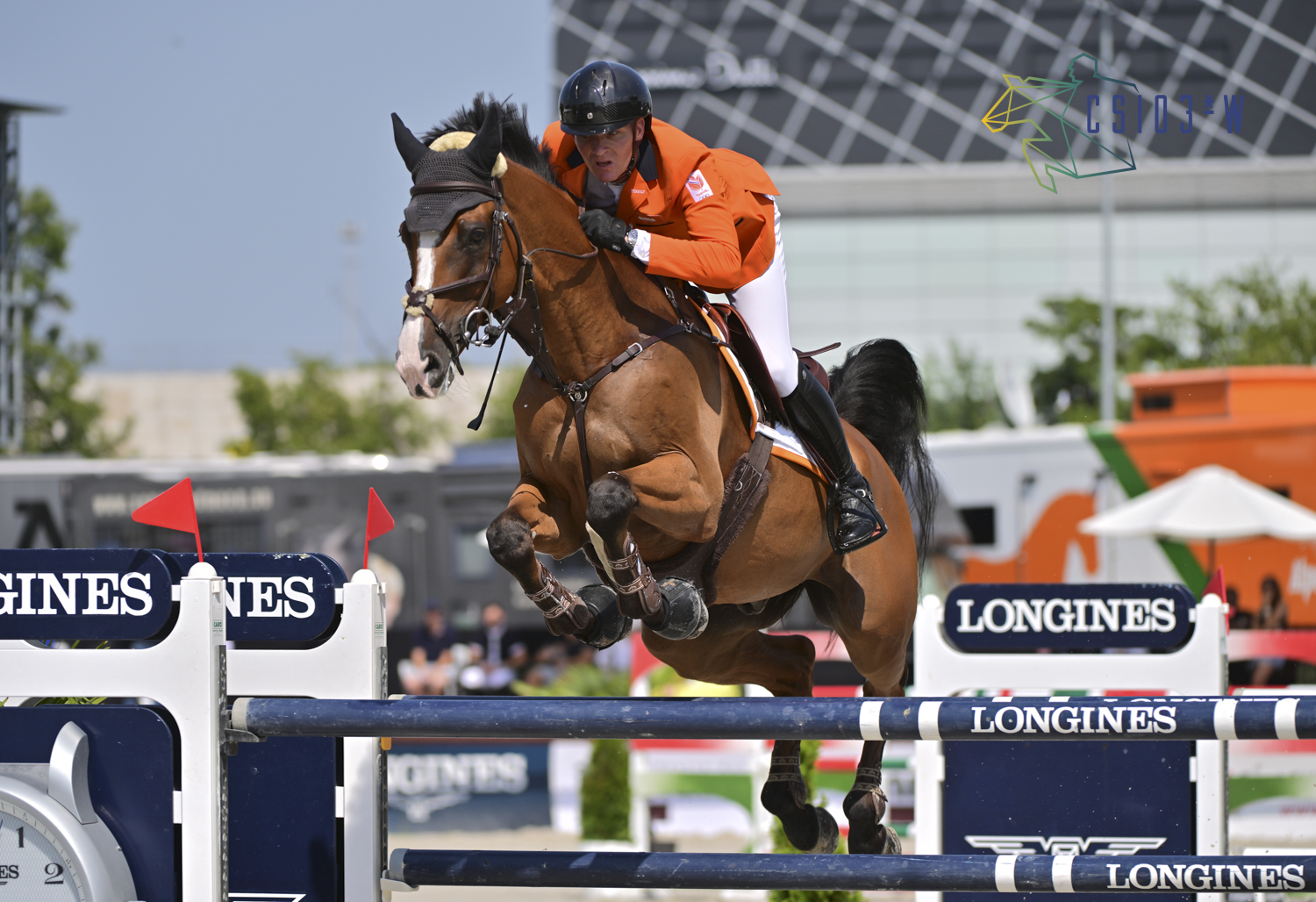
In the second rotation, several riders exceeded the time allowed and only Dutch Lars Kersten on Chuck Marienshof Z and Austrian Christoph Obernauer on Kleons Renegade delivered clear rounds.
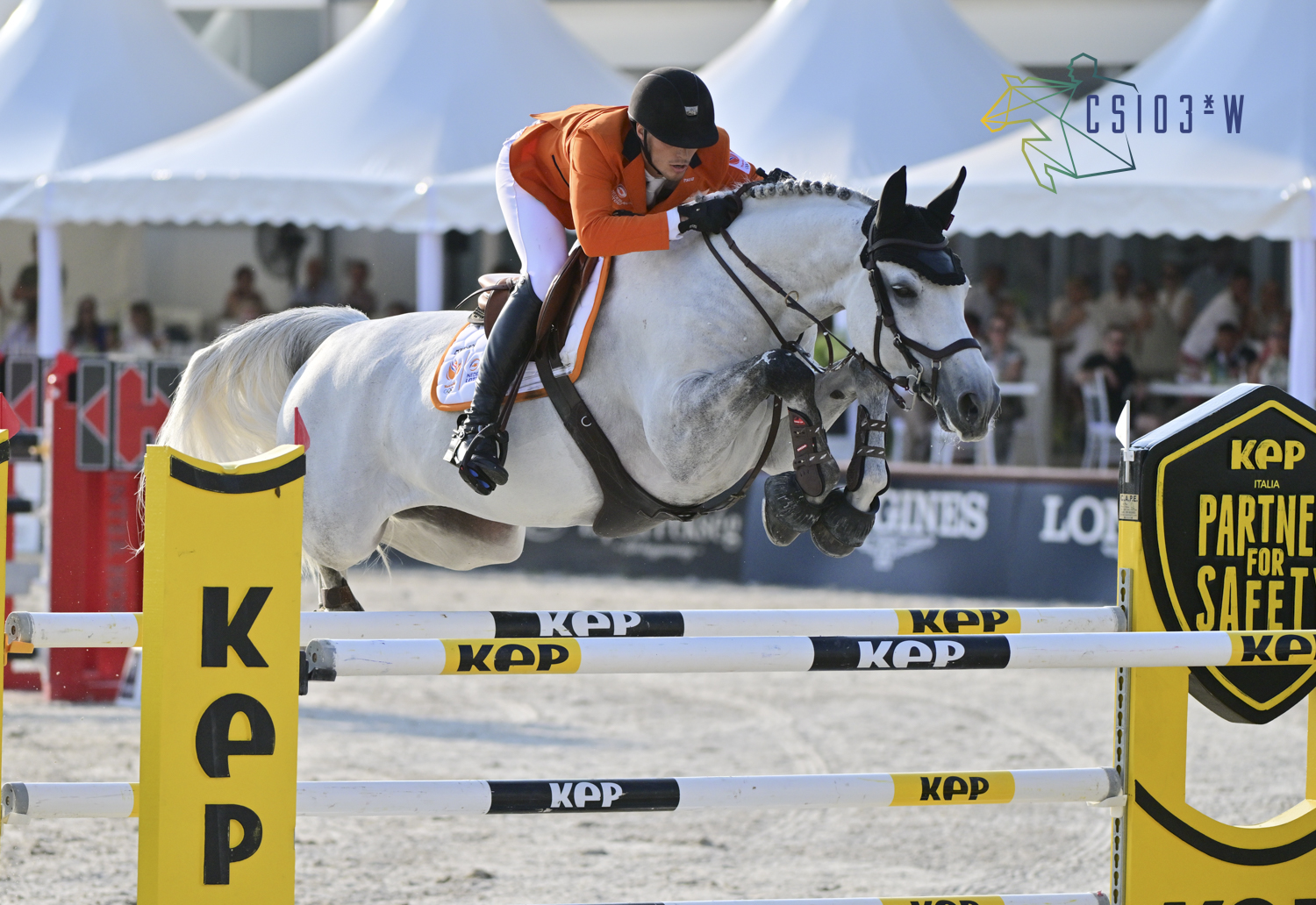
Hungarian András Kövy, Jnr. and Egano van ‘t Wingerdhof Z got only time penalties.
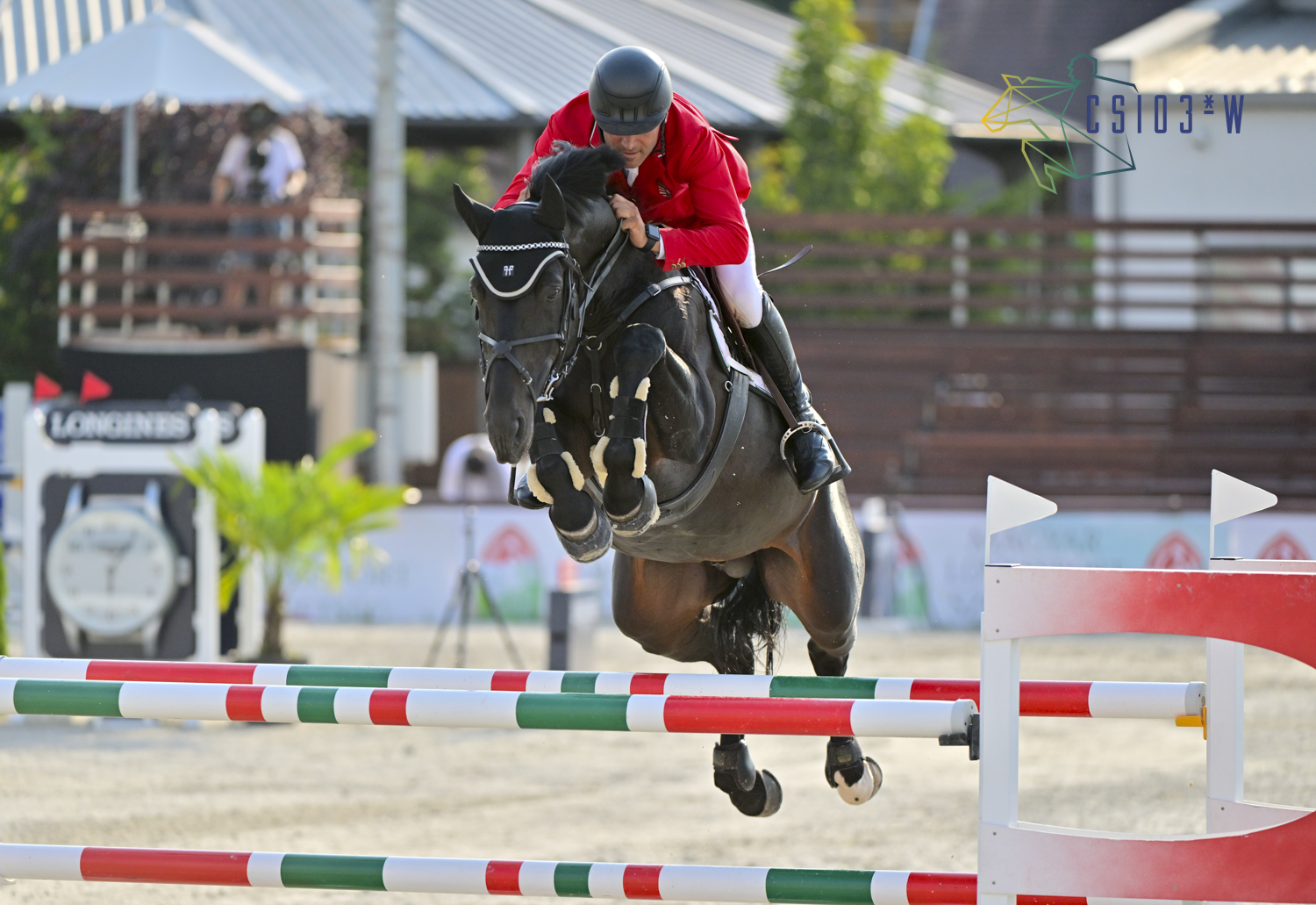
The third Hungarian team member, Ferenc Szentirmai on Quandro Blue PS, copied his teammate, collecting one time fault.
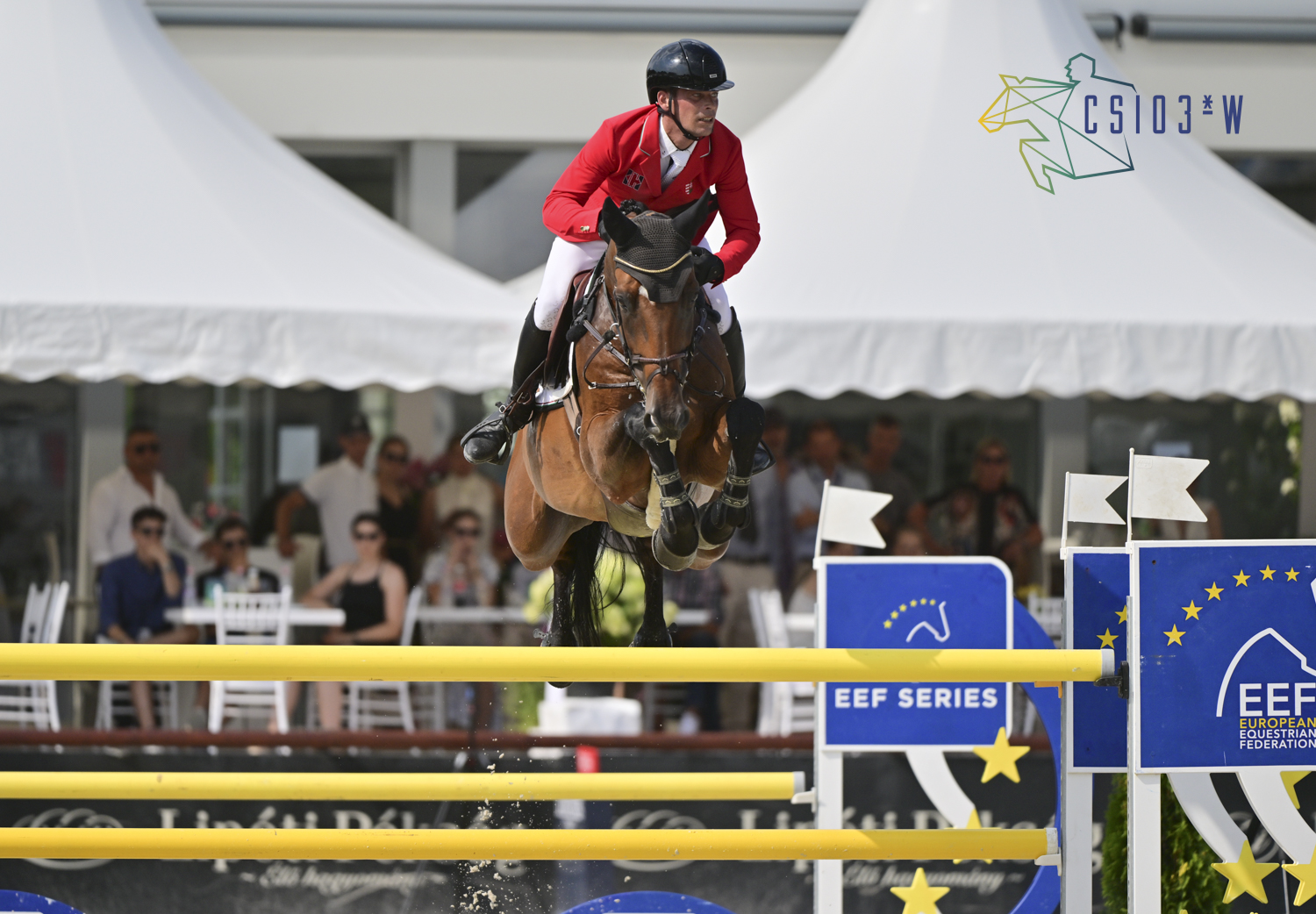
Dutch Mans Thijssen on Joviality and Austrian Max Kühner on EIC Quantum Robin V scored clear rounds.

The riders of the last rotation usually are the most consistent performers as the final result often depends on them. The last Hungarian starter this time was Vince Jármy on JB Koronaőr. They had done everything well under pressure and scored zero faults.
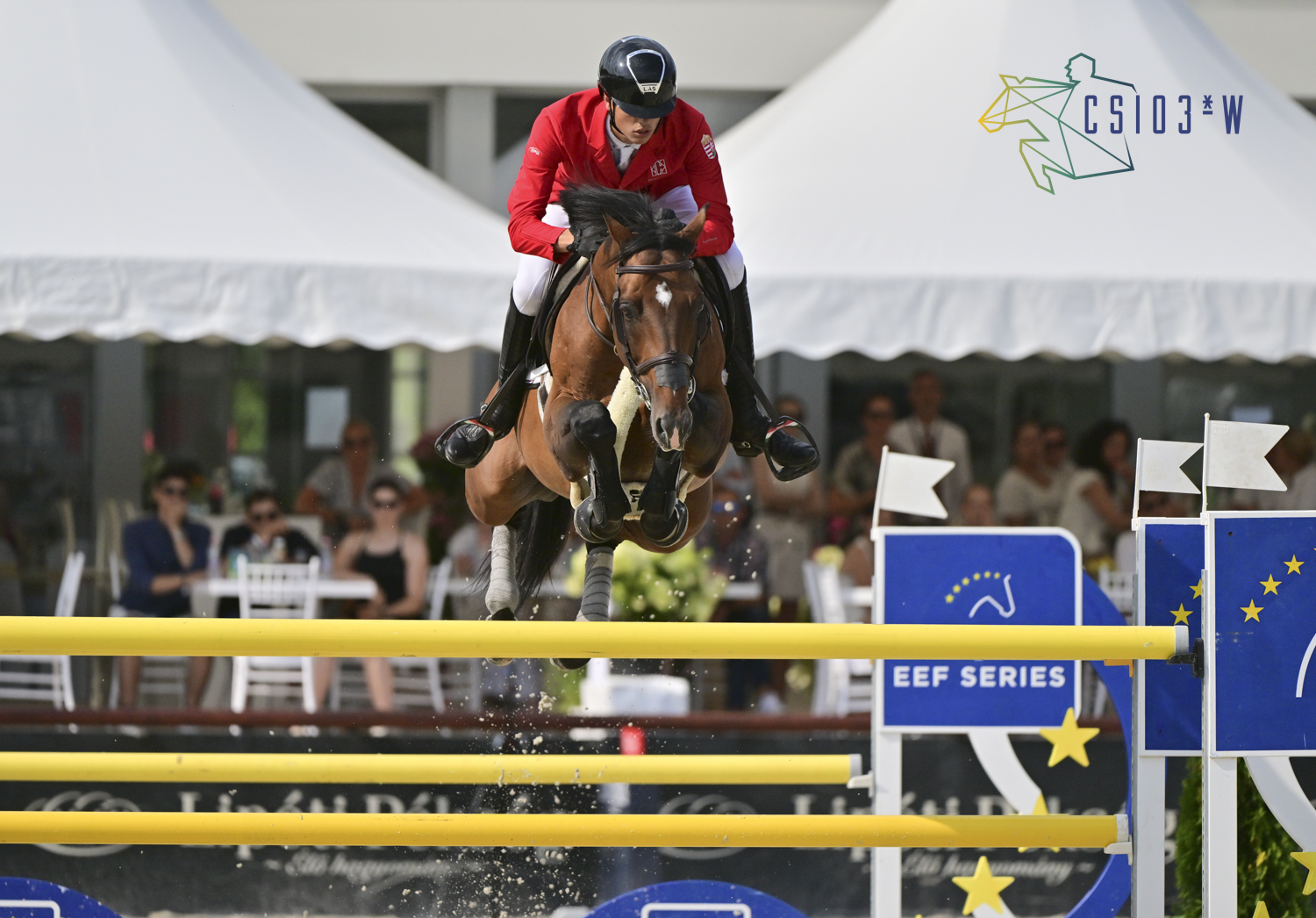
Dutch Henk Frederiks on Impian D, German Jörne Sprehe on Hickstead White and Austrian Gerfried Puck on Equitron Ornaat V managed to add another clear round to their teams’ score, so the team standings after the first round were as follows:
- The Netherlands 0 p
- Austria 0 p
- Italy 1 p
- Germany 1 p
- Hungary 1 hp
- Switzerland 4 p
- Ukraine 5 p
- Slovakia 6 p
- Czechia 13 p
- Greece 14 p
- Slovenia 22 p
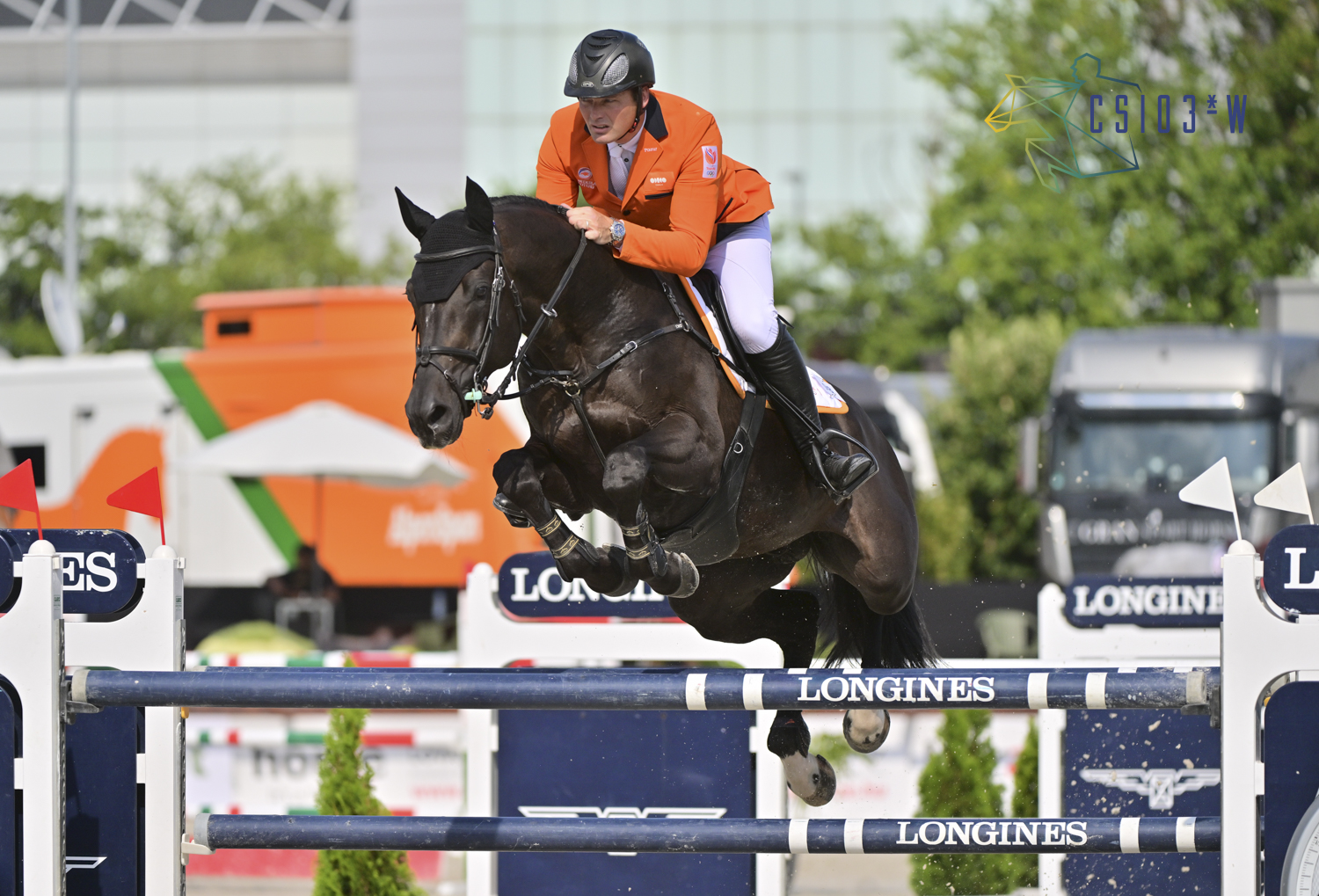
After a half-hour break, the second round kicked off in reverse order of the teams’ standing. During the break, course designer Bernardo Costa Cabral raised the height of four obstacles by five centimetres each.
In the second round, German, Dutch, Austrian and Hungarian riders delivered the most clear rounds. From the Hungarian team, Péter Szuhai, András Kövy, Jnr. and Vince Jármy scored zero faults, while Ferenc Szentirmai had four faults.
The Dutch team claimed victory after eight clear rounds.
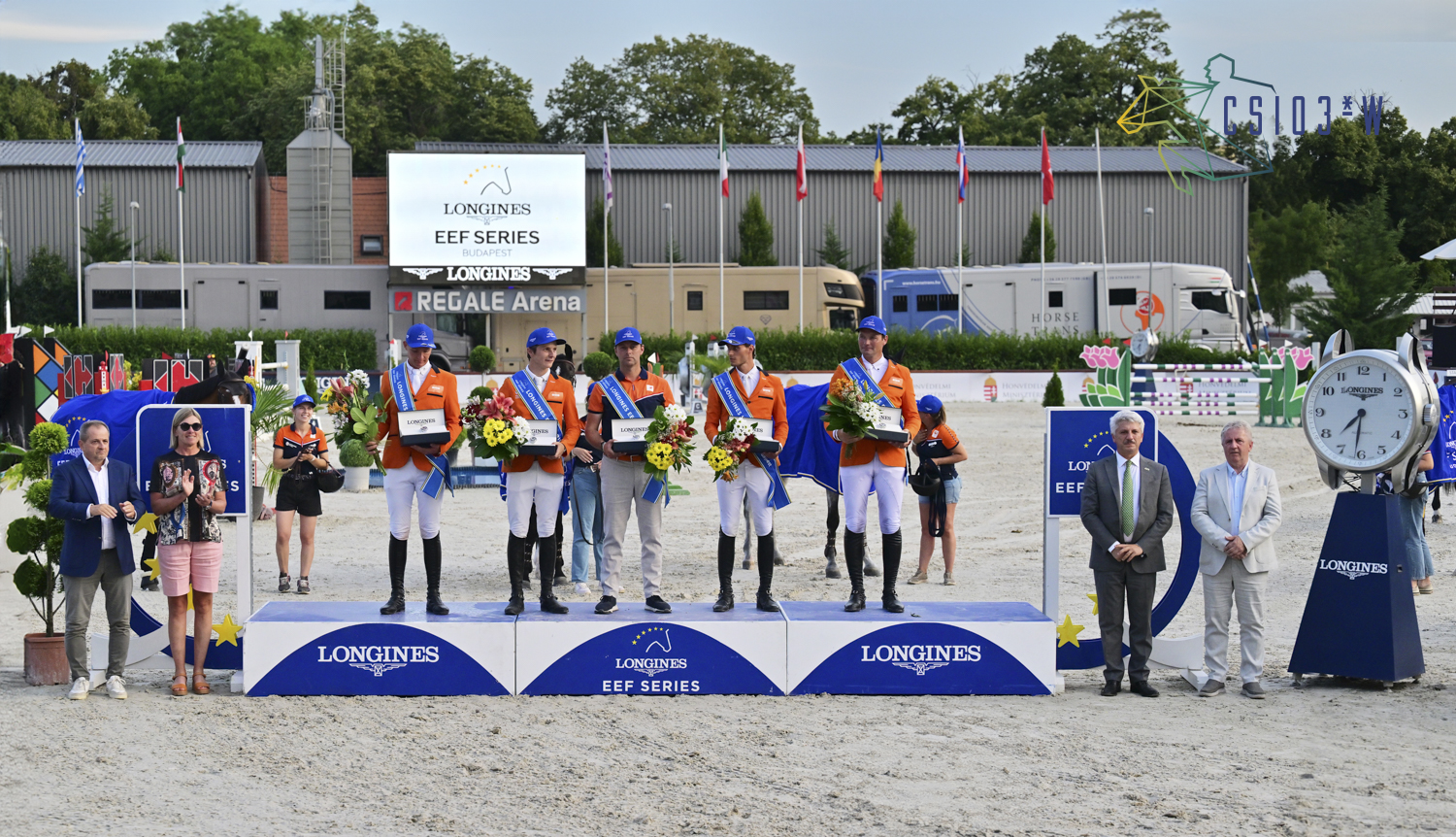
The German team finished second with one fault and with a slightly shorter time than the Hungarian team, scoring one fault as well.
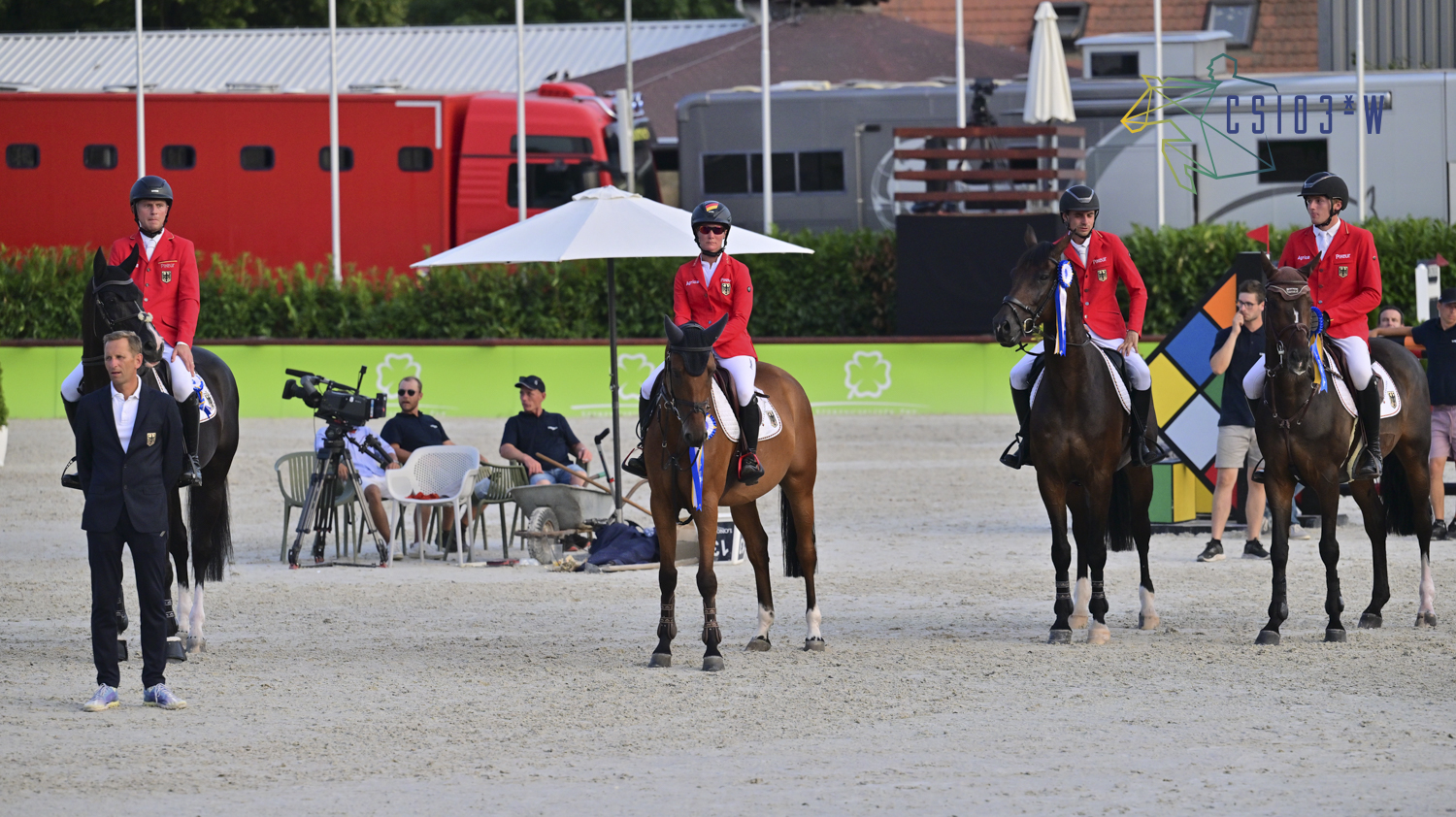
The Hungarian team finished trid.
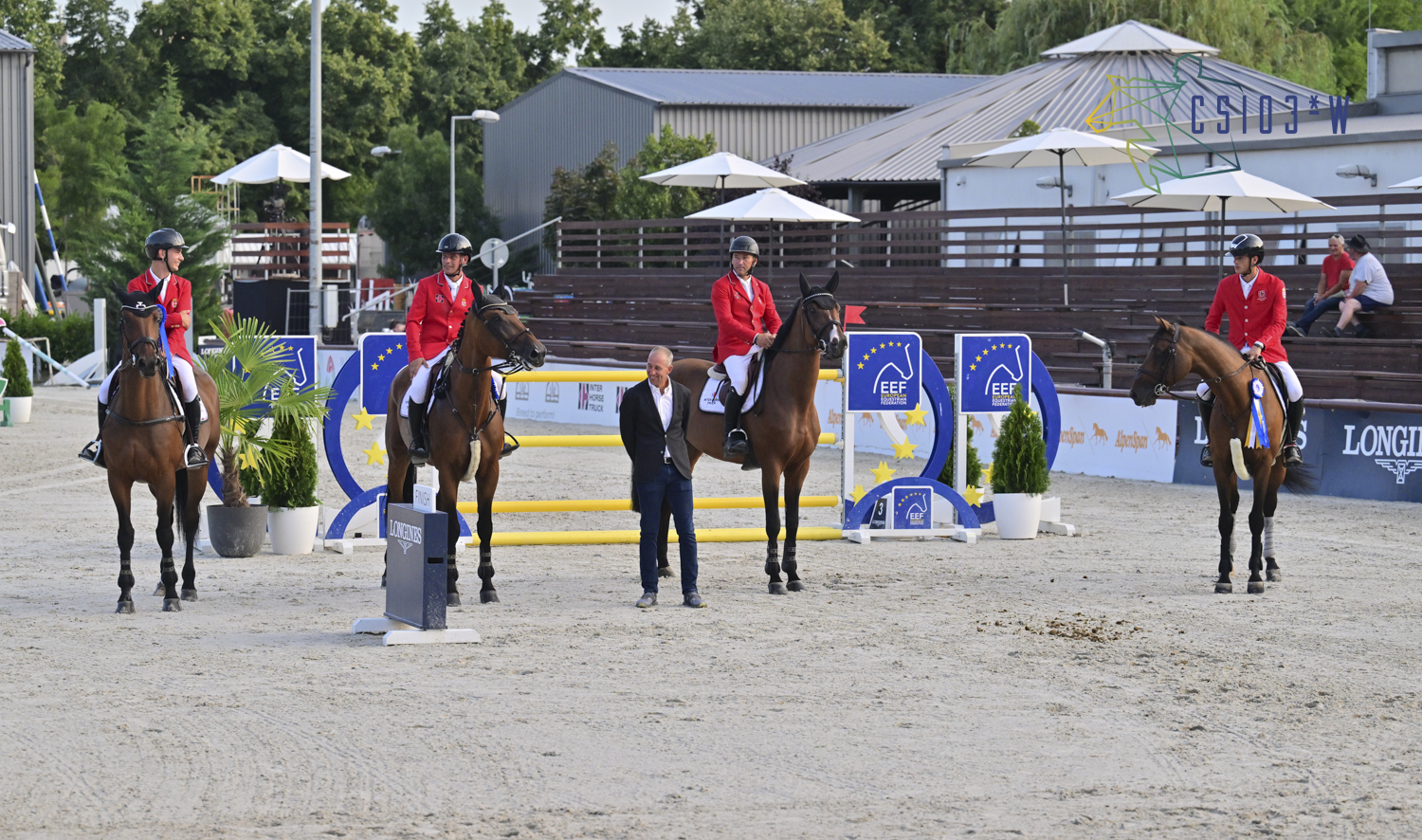
Simone Perillo representing the EEF, János Czipper, representant of Longines in Hungary, dr. Gyula Budai, President of the Olympic Preparation Committee and Dorottya Stróbl, Competition’s director congratulated the top finishing teams.

YETI backpacks were awarded to the grooms of the winning team.
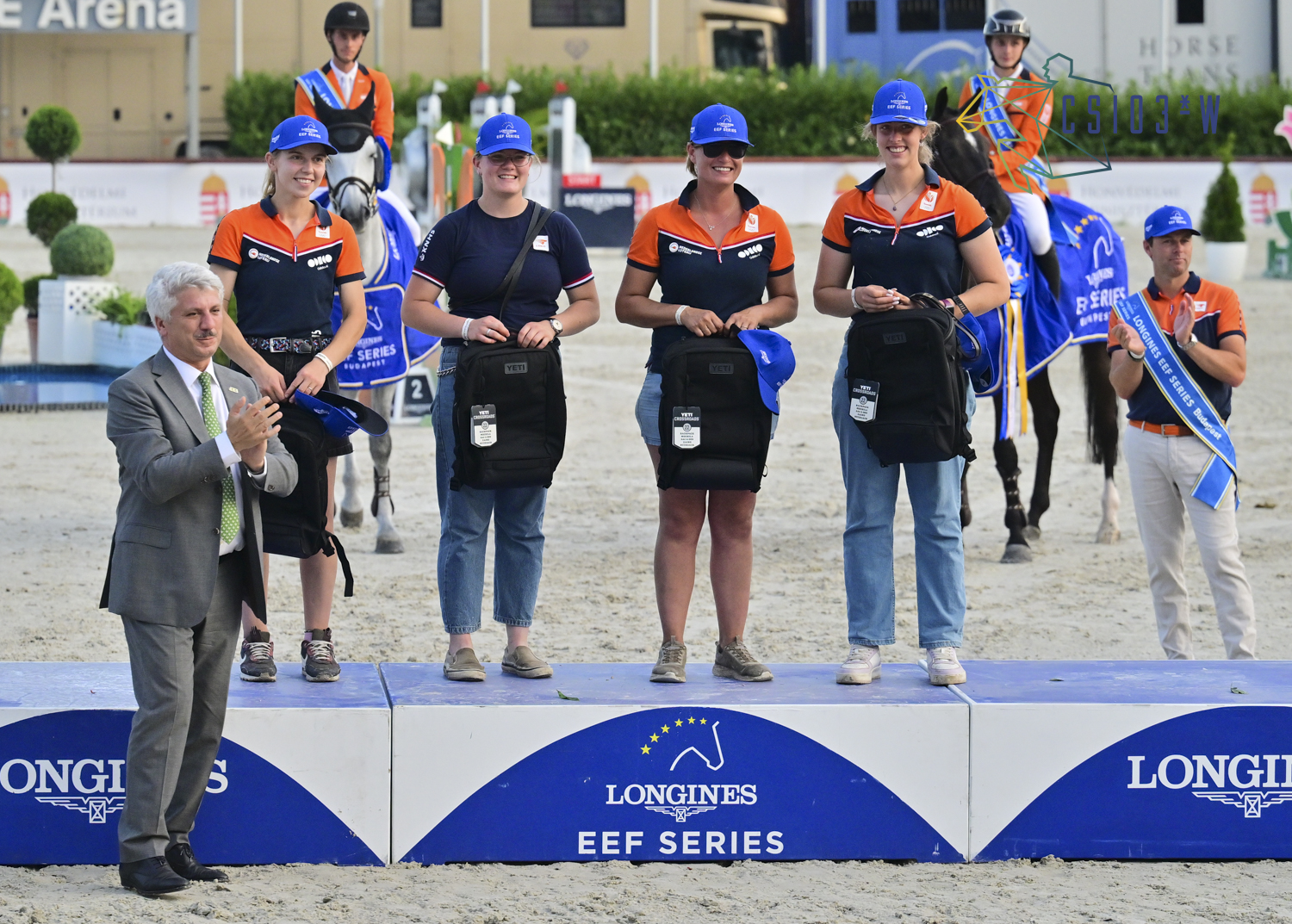
After the awarding ceremony, the Dutch team’s chef d’équipe, Vincent Voorn said: “This is a very good team with excellent horse and rider pairs. They were a bit worried about the two young team members, but they did a great job. Fast time was of the essence on this Budapest course and the tactic was simple: To go as fast as possible without making mistakes. After this victory, the Dutch team qualified for the series final in Warsaw in September.
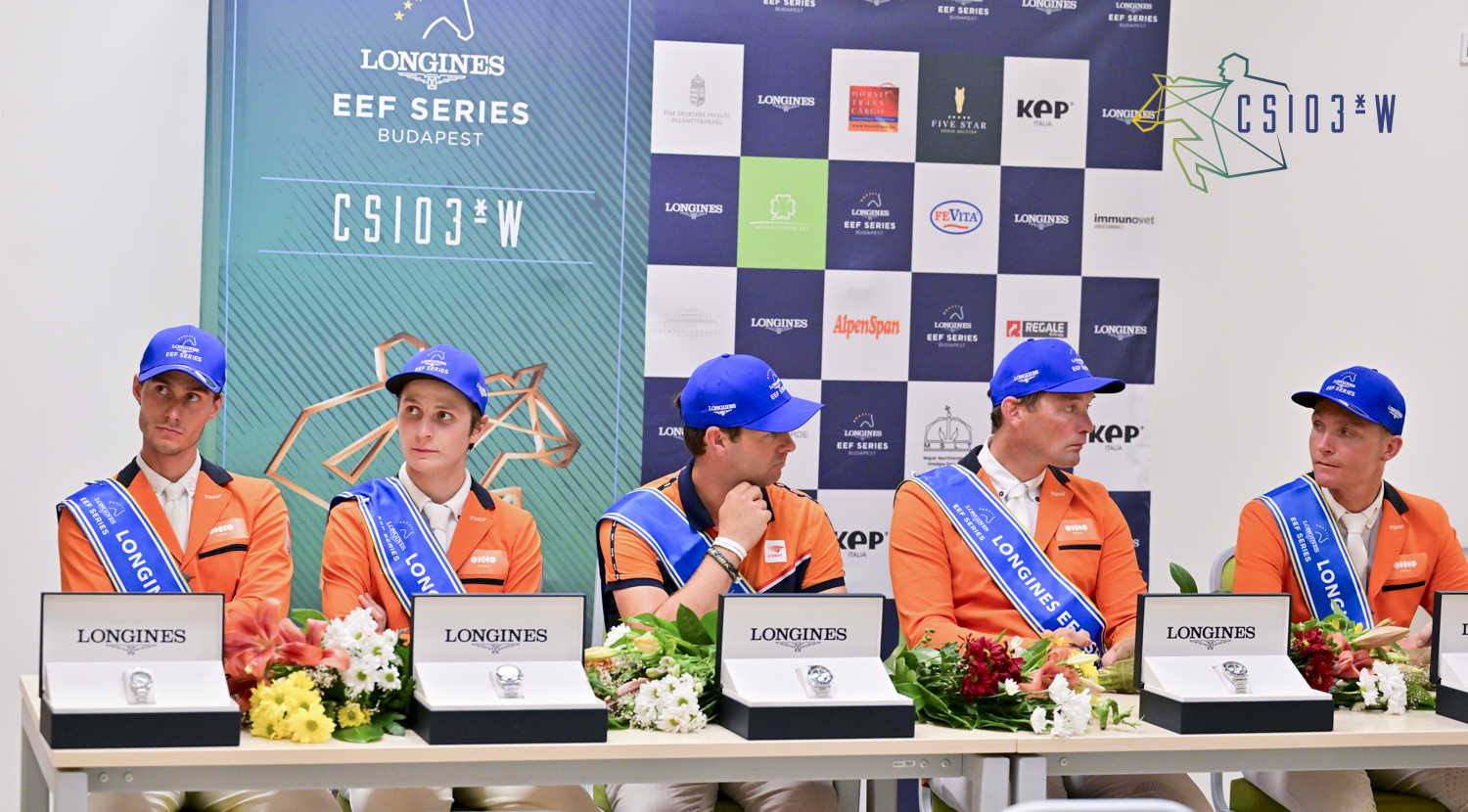
It is no exaggeration to say that the Hungarian team achieved one of the greatest successes in the history of Hungarian show jumping in a very strong field including top riders, Olympic medallists from Austria, Italy and Switzerland.
In the last four decades the Hungarian team had won twice in the National Riding Hall, Budapest: in 1998 and 2016. A third place is the third best result of the Hungarian team.
The fact that the Hungarian team was made up of two young riders (Vince Jármy and Péter Szuhai) and two experienced riders (András Kövy Jr. and Ferenc Szentirmai) is unique. A total of ten riders in the field managed to complete the Nations Cup with double clears, including Vince Jármy and Péter Szuhai.
The team was supported by chef d’équipe Balázs Horváth, and Hungarian team coach Norbert Nuxoll.
Photo: CSIO Budapest / Krisztina Hajdu